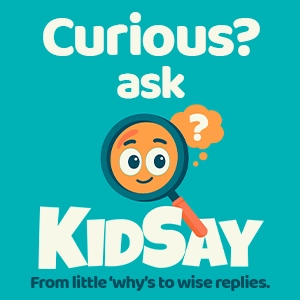Childhood is a time of discovery, learning, and growth, but it also comes with its share of challenges. From navigating friendships to facing academic hurdles, children encounter situations that test their emotional strength. This is where resilience and self-esteem come in. Building these qualities in children helps them bounce back from setbacks, believe in themselves, and thrive in an ever-changing world. This article will explore practical strategies for parents and caregivers to foster resilience and self-esteem in their children.
What is Resilience?
Resilience is the ability to adapt well in the face of adversity, trauma, tragedy, threats, or significant sources of stress [1]. For children, it means being able to cope with challenges, learn from mistakes, and recover from difficult experiences. It’s not about avoiding problems, but about developing the skills to navigate them effectively.
The Power of Self-Esteem
Self-esteem is a child’s overall opinion of themselves – how they feel about their abilities, strengths, and weaknesses [2]. High self-esteem helps children feel confident, capable, and worthy of love and respect. It empowers them to try new things, take healthy risks, and stand up for themselves. Conversely, low self-esteem can lead to feelings of inadequacy and anxiety.
Strategies for Nurturing Resilience and Self-Esteem
1. Foster Strong Connections
Children thrive when they feel loved and supported. Encourage strong family bonds and healthy friendships. A secure base at home gives children the confidence to explore the world and face challenges, knowing they have a safe place to return to [3].
2. Encourage Problem-Solving
Instead of solving all your child’s problems for them, guide them to find their own solutions. Ask questions like,
“‘What do you think you could do?” or “How can we figure this out together?” This helps them develop critical thinking and self-efficacy [4].
3. Allow for Mistakes and Failure
It’s natural to want to protect children from failure, but making mistakes is a crucial part of learning and building resilience. When children are allowed to fail in a safe environment, they learn to cope with disappointment, adjust their strategies, and try again. Praise their effort, not just the outcome [5].
4. Teach Emotional Regulation
Help children identify and express their emotions in healthy ways. Teach them coping mechanisms for stress and frustration, such as deep breathing, talking about their feelings, or engaging in calming activities. Understanding and managing emotions is a key component of resilience [6].
5. Provide Opportunities for Success
Give children opportunities to experience success, even in small ways. This could be mastering a new skill, completing a chore, or helping a friend. These positive experiences build confidence and reinforce their belief in their own abilities. Celebrate their achievements, no matter how small [7].
6. Be a Positive Role Model
Children learn by observing. Model resilience and self-compassion in your own life. Show them how you handle challenges, bounce back from setbacks, and speak kindly to yourself. Your actions will teach them more than any words [8].
Q&A
Q1: How can I help my child develop a positive self-image?
A1: Encourage your child to focus on their strengths and unique qualities. Provide genuine praise for their efforts and character, not just their achievements. Help them understand that everyone has strengths and weaknesses, and that’s perfectly normal. Encourage them to pursue activities they enjoy and excel at [9].
Q2: Is it okay for my child to fail?
A2: Yes, it is absolutely okay for your child to fail. In fact, it’s essential for their growth. Failure teaches valuable lessons about perseverance, problem-solving, and adapting to challenges. Support them through their failures, help them learn from the experience, and encourage them to try again [10].
Q3: How can I teach my child to cope with stress and anxiety?
A3: Teach your child simple coping mechanisms like deep breathing exercises, mindfulness, or talking about their feelings. Encourage physical activity, adequate sleep, and a balanced diet. Create a supportive environment where they feel safe to express their worries. If anxiety is severe or persistent, consider seeking professional help [11].
Sources
[1] American Psychological Association. (n.d.). Resilience guide for parents and teachers. https://www.apa.org/topics/resilience/guide-parents-teachers
[2] KidsHealth. (n.d.). 9 Ways to Boost Your Child’s Self-Esteem. https://kidshealth.org/en/parents/boost-self-esteem.html
[3] Harvard University Center on the Developing Child. (n.d.). A Guide to Resilience: Building young children’s capacity for resilience. https://developingchild.harvard.edu/resource-guides/guide-resilience/
[4] Children’s Hospital Colorado. (n.d.). How to Build Resilience in Children. https://www.childrenscolorado.org/just-ask-childrens/articles/resilience-in-children/
[5] Child Mind Institute. (n.d.). 12 Tips for Raising Confident Kids. https://childmind.org/article/12-tips-raising-confident-kids/
[6] Raising Children Network. (n.d.). Building resilience in children 3-8 years. https://raisingchildren.net.au/school-age/development/school-age-social-emotional-development/resilience-how-to-build-it-in-children-3-8-years
[7] PositivePsychology.com. (n.d.). Self-Esteem for Kids: 30+ Counseling Tools & Activities. https://positivepsychology.com/self-esteem-for-children/
[8] Big Life Journal. (n.d.). 9 Self-Confidence Building Activities for Students. https://biglifejournal.com/blogs/blog/self-confidence-building-activities
[9] Therapist Aid. (n.d.). Self-Esteem Worksheets for Children. https://www.therapistaid.com/therapy-worksheets/self-esteem/children
[10] Reddit. (2023, October 17). How to boost confidence in children?. https://www.reddit.com/r/ScienceBasedParenting/comments/179zwm1/how_to_boost_confidence_in_children/
[11] Nemours KidsHealth. (n.d.). Helping Kids Handle Stress. https://kidshealth.org/en/parents/stress.html








0 Comments